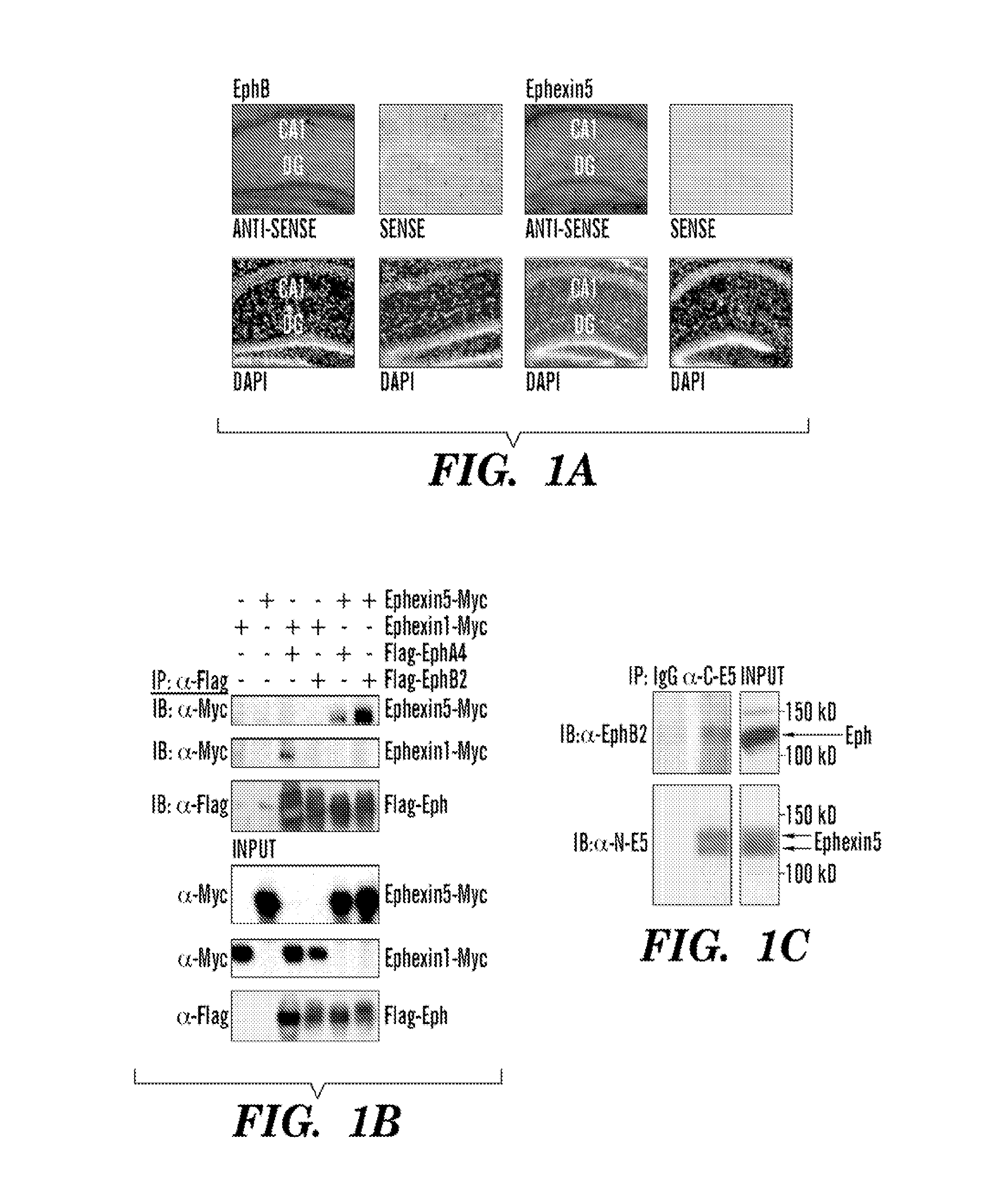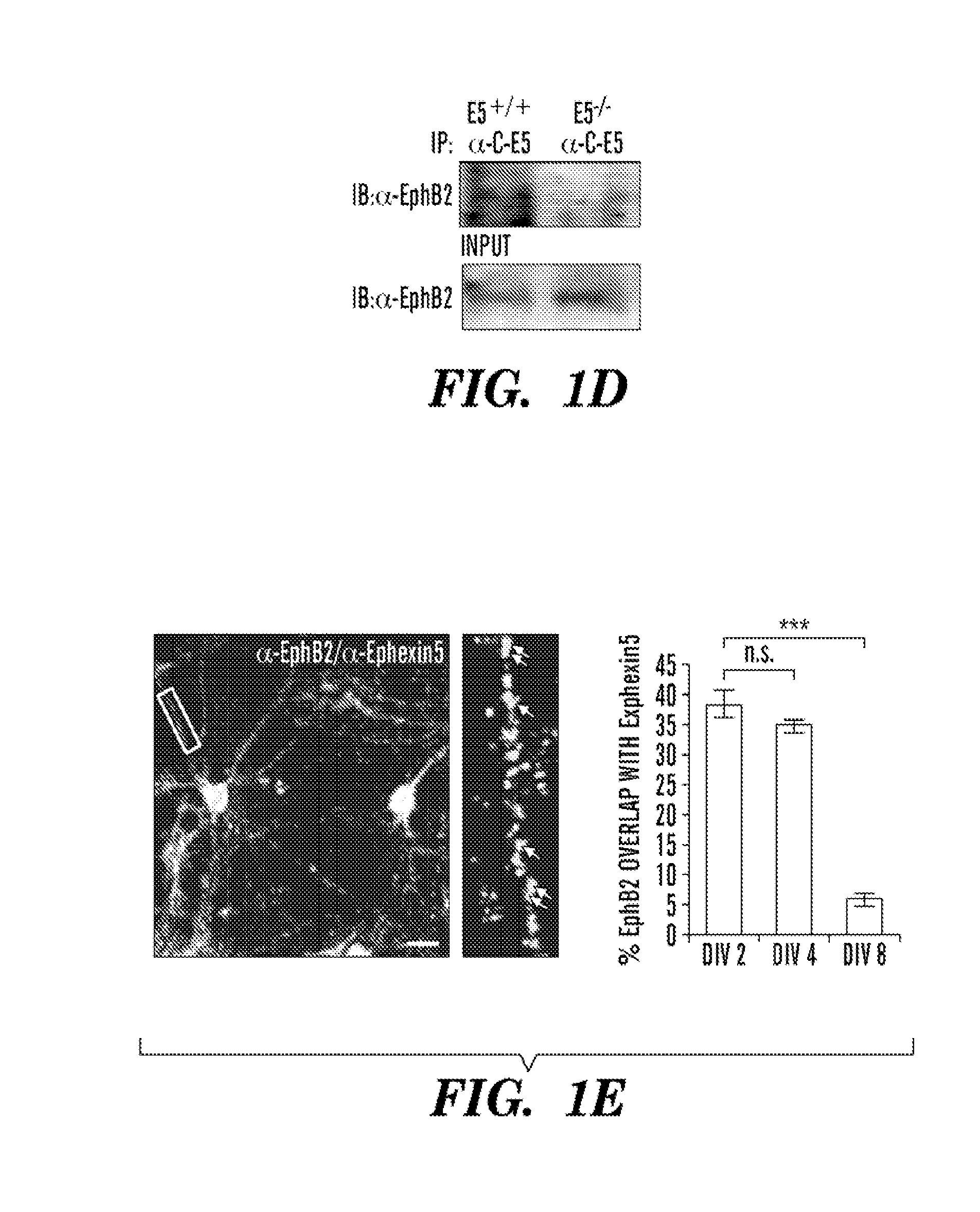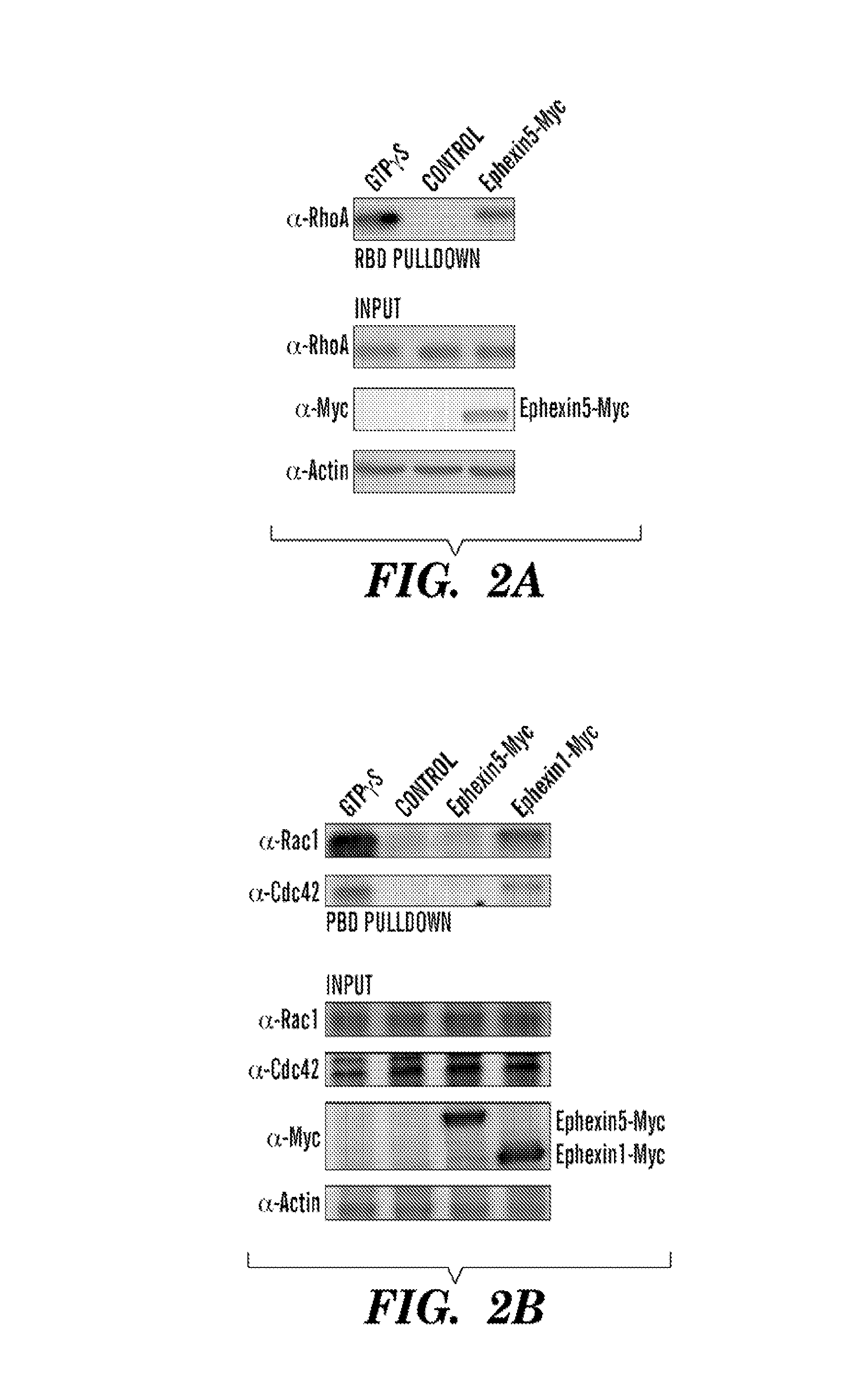Method for determining activators of excitatory synapse formation
a technology of activators and excitatory synapses, which is applied in the direction of drug compositions, peptides, metabolic disorders, etc., can solve the problems of decreased excitatory synapse numbers, deformation of spine morphogenesis, and increased likelihood of dendritic filopodia, so as to inhibit the activity of rho gef ephexin5 and increase the formation of spine/excitatory synapses and/or numbers
- Summary
- Abstract
- Description
- Claims
- Application Information
AI Technical Summary
Benefits of technology
Problems solved by technology
Method used
Image
Examples
example 1
Ephexin5 Interacts with EphB2
[0179]To identify mechanisms that restrict the ability of EphBs to promote an increase in excitatory synapse number, the inventors searched for RhoA guanine nucleotide exchange factors (GEFs) that are predicted to specifically activate RhoA signaling, to be expressed in the same population of neurons that express EphB, to be expressed at the same time during development as EphB, and to interact with EphB. The inventors' previous experiments demonstrated that Ephexinl is an activator of RhoA that selectively interacts with EphAs but not EphBs (Shamah et al., 2001). The inventors focus their efforts on Ephexin5, the only other Ephexin family member that is highly expressed in the brain (Sahin et al., 2005; Shamah et al., 2001). Structure-function studies of a variety of GEFs have led to the identification of amino acid residues in the activation domain of Rho family GEFs that specifically identify the GEFs as activators of RhoA rather than Rac or Cdc42. Ap...
example 2
Ephexin5 is a Guanine Nucleotide Exchange Factor that Activates RhoA Signaling
[0183]To determine if Ephexin5 activates RhoA, the inventors transfected HEK293T cells with a control plasmid or a plasmid that drives the expression of Myc-tagged mouse Ephexin5. The inventors then prepared extracts from the transfected cells and incubated the extracts with a GST-fusion protein that includes the Rhotekin-Binding Domain (GST-RBD), a protein domain that selectively interacts with active (GTP-bound) but not inactive (GDP-bound) RhoA. Following SDS-PAGE of the proteins in the extract that bind to GST-RBD, RhoA binding to GST-RBD was measured by immunoblotting with anti-RhoA antibodies. The inventors found that cells expressing Ephexin5 exhibited higher levels of activated RhoA compared to cells transfected with a control plasmid, indicating that Ephexin5 activates RhoA (FIG. 2A).
[0184]When a similar series of experiments were performed using a GST-fusion Pak-Binding Domain (GST-PBD) which spe...
example 3
Ephexin5 Negatively Regulates Excitatory Synapse Number
[0187]The inventors' findings indicated that Ephexin5 interacts with EphB, a key regulator of excitatory synapse development. Thus, they next asked whether Ephexin5 plays a role in the development of excitatory synapses. Towards this end, they generated two short hairpin RNA constructs that each effectively knocks down Ephexin5 protein levels when expressed in HEK293T cells (FIGS. 10A and 10B). These shRNAs were introduced into cultured hippocampal neurons together with a plasmid that drives expression of green fluorescent protein (GFP) to allow detection of the transfected cells. The inventors found by staining with an anti-N-terminal Ephexin5 antibody that the Ephexin5 shRNAs (E5-shRNA), but not control shRNAs, efficiently knocked down Ephexin5 expression selectively in the transfected neurons (FIG. 10C).
[0188]The inventors' method for introducing shRNAs results in the transfection of a low percentage of the neurons, thus faci...
PUM
| Property | Measurement | Unit |
|---|---|---|
| Disorder | aaaaa | aaaaa |
Abstract
Description
Claims
Application Information
 Login to View More
Login to View More - R&D
- Intellectual Property
- Life Sciences
- Materials
- Tech Scout
- Unparalleled Data Quality
- Higher Quality Content
- 60% Fewer Hallucinations
Browse by: Latest US Patents, China's latest patents, Technical Efficacy Thesaurus, Application Domain, Technology Topic, Popular Technical Reports.
© 2025 PatSnap. All rights reserved.Legal|Privacy policy|Modern Slavery Act Transparency Statement|Sitemap|About US| Contact US: help@patsnap.com



